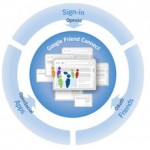 San Francisco — After mapping out every inch of the planet earth via Google Earth, the search engine titan would soon empower Stargazers with a new pioneering software which can identify distant planets and galaxies in the night sky from a photo taken on a mobile.
San Francisco — After mapping out every inch of the planet earth via Google Earth, the search engine titan would soon empower Stargazers with a new pioneering software which can identify distant planets and galaxies in the night sky from a photo taken on a mobile.
The new Google Earth application, dubbed “Star Droid,” employs a GPS (Global Positioning System) mapping systems which is now available in most new handsets,
Google’s Star Droid would now enable stargazing enthusiasts to point their phones up and immediately tell their constellations from their planets. Amateur astronomers will be able to distinguish the variations between Mercury and Mars by simply pointing their camera-phones at the night sky and clicking a button.
The (GPS) software will include existing maps of space to work out a person’s location, then automatically attaches name tags to the stars and planets that can be seen through the phone’s viewfinder. The mapping application, which could be launched this week, is also likely to identify the object’s distance from Earth and its position within a constellation.
The move is the latest attempt in Google’s endeavor in ameliorating its mapping technology, which already includes Google Sky, Google Earth and Google Street View.
Google Sky is made up of a combination of images from the Sloan Digital Sky Survey, the Digitised Sky Survey and the Hubble Space Telescope.
Carolin Crawford, of Cambridge University’s institute of astronomy, which manages open evenings for the public, said: “We discovered many members of the public have a real enthusiasm about stars and planets, but I’m afraid this is often not matched by much knowledge.
“This innovation sounds like it could be really useful to help people learn what they are looking at. It will be interesting to see how much the camera on the phones will be able to pick up.
“The night sky is pretty crowded. Whereas Venus can appear bright in the sky, many stars appear very dimly and may be difficult for a camera-phone to spot.”
Experts understand that the growth of street lighting and pollution over the past century have left urban dwellers struggling to identify even the best-known constellations, such as the Plough or Orion.
Google has been lauded for its innovation, and its Google Earth application, which mapped the world, even led to conservationists discovering a new forest in Mozambique.
The company has faced disapproval on several fronts in recent months, however.
Its Street View product, which offers a 360-degree view of tens of thousands of roads in the world’s biggest cities, sparked privacy protests and has been criticized as a tool for burglars.
Astronomers expect Google’s latest application, which will be available for free and can be downloaded from the Internet, will help to inspire and educate a new generation of stargazers.
Exact launch date for the Star Droid has not yet been announced. Google declined to comment on Star Droid.


